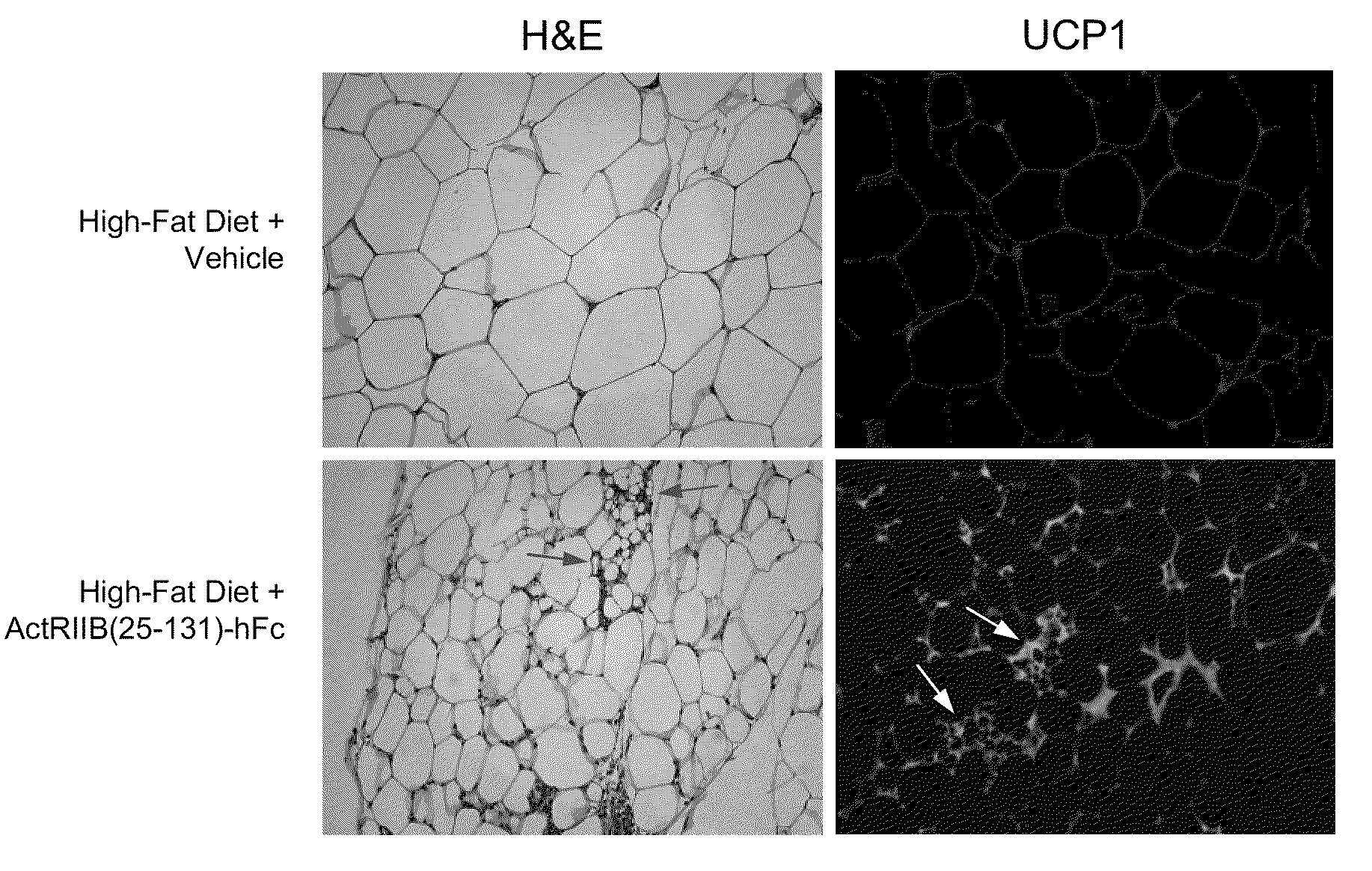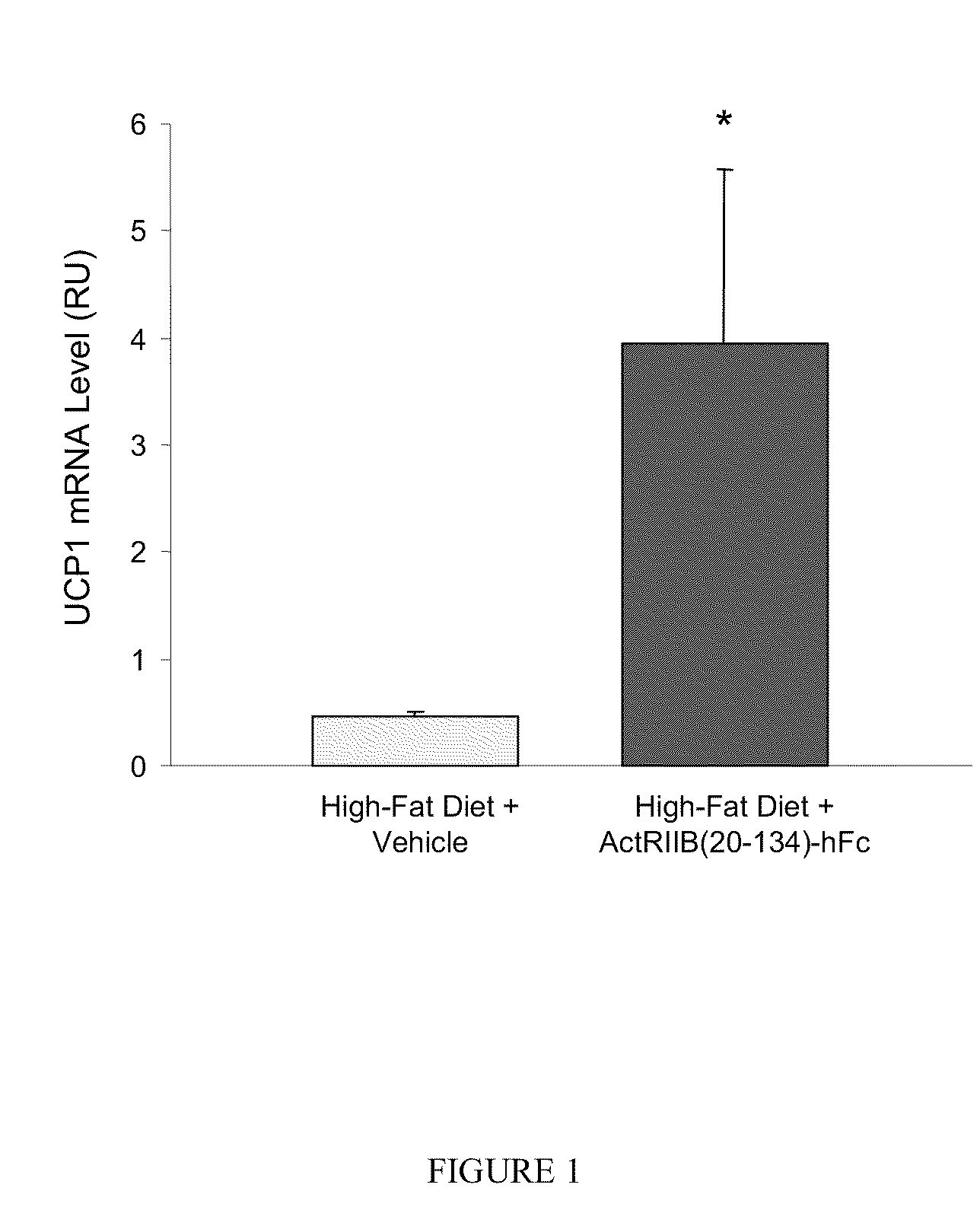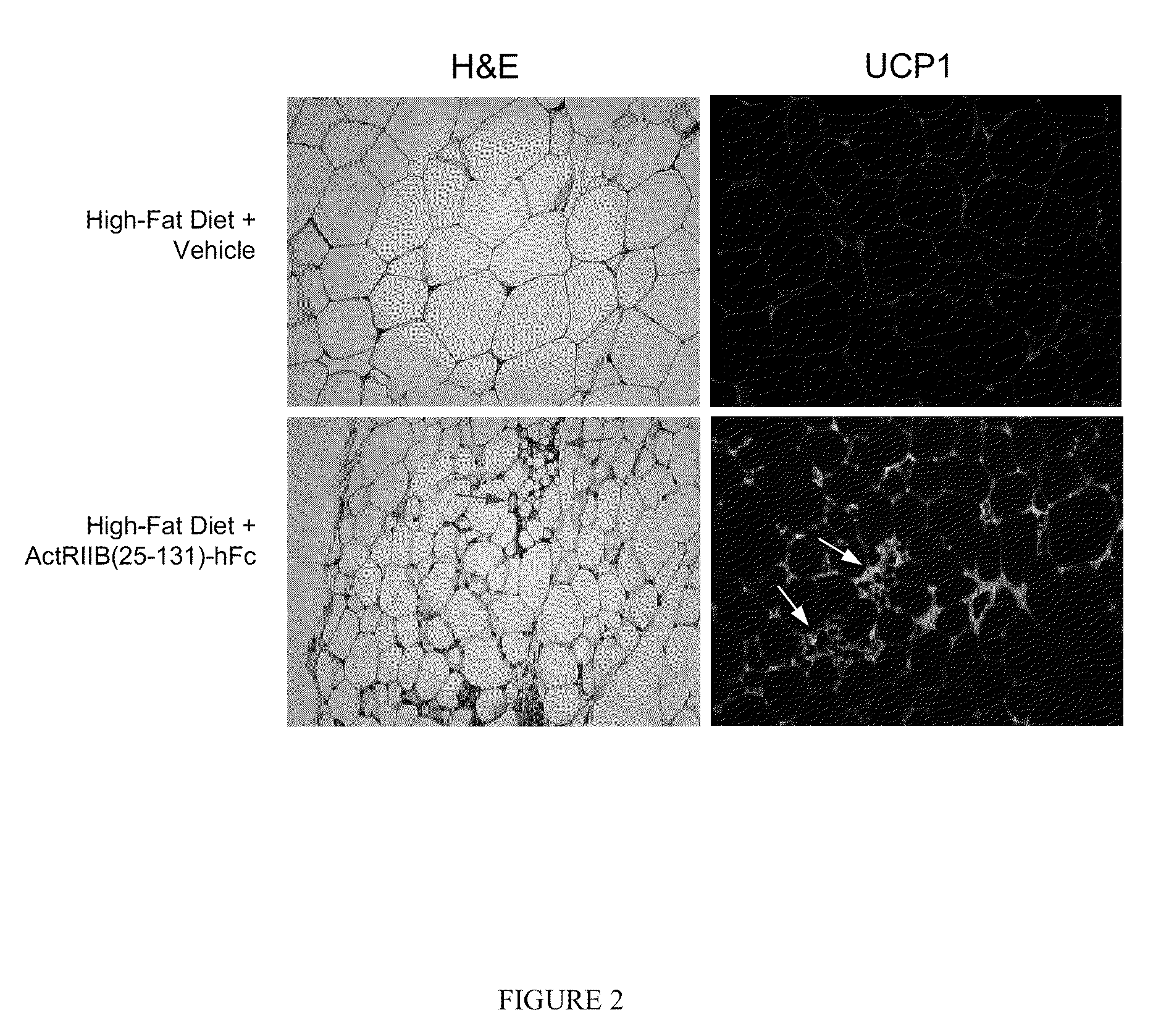Methods for increasing thermogenic adipocytes
- Summary
- Abstract
- Description
- Claims
- Application Information
AI Technical Summary
Benefits of technology
Problems solved by technology
Method used
Image
Examples
example 1
Generation of an ActRIIB-Fc Fusion Protein
[0158]Applicants constructed a soluble ActRIIB fusion protein that has the extracellular domain of human ActRIIB fused to a human or mouse Fc domain with a minimal linker (three glycine amino acids) in between. The constructs are referred to as ActRIIB(20-134)-hFc and ActRIIB(20-134)-mFc, respectively.
[0159]ActRIIB-hFc is shown below as purified from CHO cell lines (SEQ ID NO: 5)
GRGEAETRECIYYNANWELERTNQSGLERCEGEQDKRLHCYASWRNSSGTIELVKKGCWLDDFNCYDRQECVATEENPQVYFCCCEGNFCNERFTHLPEAGGPEVTYEPPPTAPTGGGTHTCPPCPAPELLGGPSVFLFPPKPKDTLMIS
[0160]The ActRIIB(20-134)-hFc and ActRIIB(20-134)-mFc proteins were expressed in CHO cell lines. Three different leader sequences were considered:
(SEQ ID NO: 7)(i) Honey bee mellitin (HBML): MKFLVNVALVFMVVYISYIYA(SEQ ID NO: 8)(ii) Tissue Plasminogen Activator (TPA): MDAMKRGLCCVLLLCGAVFVSP(SEQ ID NO: 9)(iii) Native: MGAAAKLAFAVFLISCSSGA.
[0161]The selected form employs the TPA leader and has the following unprocessed amin...
example 2
Generation of ActRIIB-Fc Mutants
[0166]Applicants generated a series of mutations in the extracellular domain of ActRIIB and produced these mutant proteins as soluble fusion proteins between extracellular ActRIIB and an Fc domain. The background ActRIIB-Fc fusion has the sequence (Fc portion underlined) (SEQ ID NO:12):
SGRGEAETRECIYYNANWELERTNQSGLERCEGEQDKRLHCYASWRNSSGTIELVKKGCWLDDFNCYDRQECVATEENPQVYFCCCEGNFCNERFTHLPEAGGPEVTYEPPPTAPTGGGTHTCPPCPAPELLGGPSVFLFPPKPKDTLMI
[0167]Various mutations, including N- and C-terminal truncations, were introduced into the background ActRIIB-Fc protein. Based on the data presented in Example 1, it is expected that these constructs, if expressed with a TPA leader, will lack the N-terminal serine.
[0168]Mutations were generated in ActRIIB extracellular domain by PCR mutagenesis. After PCR, fragments were purified through a Qiagen column, digested with SfoI and Agel and gel purified. These fragments were ligated into expression vector pAID4 (see WO2006 / 012...
example 3
Effect of ActRIIB(20-134)-hFc on Thermogenic Properties of White Adipose Tissue in Mice Fed a High-Fat Diet
[0173]Applicants investigated the effects of ActRIIB-Fc on brown adipocytes and other metabolic endpoints in male mice fed a high-fat diet. Ten-week-old C57BL / 6 mice were weight-matched and treated with ActRIIB(20-134)-hFc (n=10) or Tris-buffered-saline (TBS) vehicle (n=7) twice per week at 10 mg / kg, s.c., for 60 days. During this period, mice had unlimited access to a diet containing 58% fat instead of the standard chow containing 4.5% fat. At study termination, epididymal fat pads were collected, and quantitative RT-PCR (reverse transcription polymerase chain reaction) was used to measure levels of mRNA encoding uncoupling protein-1 (UCP1), a well-documented marker of thermogenic capability in brown adipocytes, which are diffusely distributed within white adipose depots (Cousin et al., 1992, J Cell Sci 103:931-942).
[0174]ActRIIB(20-134)-hFc treatment caused a constellation of...
PUM
| Property | Measurement | Unit |
|---|---|---|
| Fraction | aaaaa | aaaaa |
| Fraction | aaaaa | aaaaa |
| Fraction | aaaaa | aaaaa |
Abstract
Description
Claims
Application Information
 Login to View More
Login to View More - R&D
- Intellectual Property
- Life Sciences
- Materials
- Tech Scout
- Unparalleled Data Quality
- Higher Quality Content
- 60% Fewer Hallucinations
Browse by: Latest US Patents, China's latest patents, Technical Efficacy Thesaurus, Application Domain, Technology Topic, Popular Technical Reports.
© 2025 PatSnap. All rights reserved.Legal|Privacy policy|Modern Slavery Act Transparency Statement|Sitemap|About US| Contact US: help@patsnap.com



